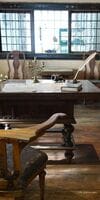The house of Peter the Great is a wooden house, which is a former royal mansion and is considered the first building in St. Petersburg.
Today, the wooden house, surrounded by a protective case, is a unique architectural monument of the 18th century and the oldest building in St. Petersburg, which houses a museum, where in several small rooms there are artifacts of the Peter the Great era and authentic things of Peter the Great, including: a red cloth uniform dress decorated with gold thread; an oriental cane; a casting of Peter's hand; a vereyka boat and a chair of Peter I.

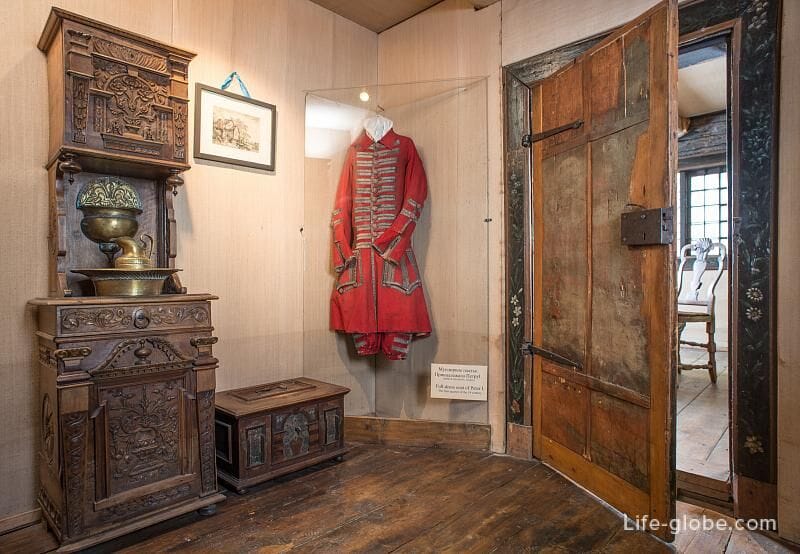
Tsar Peter I ordered the house to be put up as his own dwelling in May 1703.
The wooden house, later painted under brick, was put up from May 24 (June 4) to May 26 (June 6), 1703, on the left bank of the Neva River, not far from Peter and Paul Fortress (Trinity Square), so that the tsar could personally observe the fortress.
The house was small, it was a simple building in terms of an area of 65 square meters on the outer perimeter, only a few rooms and architecturally resembled a Dutch building. It consisted of a log house measuring 12.7 × 5.7 meters and a height of 5.8 meters, made of hewn pine logs. Then it was the first "palace" of Peter the Great and in the documents of that time it was called the "Original Palace" or "Red Mansions".
A wooden mortar and "flaming" cannonballs were installed on the roof of the building, as a sign that the house belongs to the "captain of the bombardment company", so Peter I was listed in the army lists.
In the center of the house were the vestibule (entrance hall, entrance part), the room to the right of which served as an office where the sovereign was engaged in business and received dignitaries, and to the left - the dining room, to which the kitchen was attached; from the dining room the door led to a small bedroom.
The tsar lived in the house before the construction of the Winter and Summer palaces.
In 1723, Peter the Great, who had already become emperor by that time, paid special attention to the first royal dwelling in the city and by a personal decree on the construction of a protective gallery over the house, erected the first palace to the rank of a monument. The construction of the protective stone gallery (case) was carried out by architect Domenico Trezzini.
By order of Empress Elizabeth Petrovna (daughter of Peter I) in 1742, a chapel in the name of the Miraculous Image of the Savior was opened in the dining room of the House. The Romanovs' ancestral shrine, the icon of the Savior Not Made with Hands, which belonged to Peter, was placed in the chapel. During his lifetime, Peter, in front of the image of the Savior, asked for God's blessing for the foundation of a new capital, he accompanied the tsar on campaigns, during his illness and burial. Now this icon is in the Transfiguration Cathedral of St. Petersburg. The chapel in the House of Peter I was abolished in 1929.
The brick case of the House that exists today has been built since 1844. In 1899, according to the project of the engineer-architect N.M. Salko, two vestibules were attached to the case of the House of Peter I from the north and south. The northern vestibule was intended for the public, the southern one for storing Peter I's vereyka boat.

Also on the territory adjacent to the House on the Neva side, a garden was laid out, which was surrounded by a cast-iron patterned fence made with private donations.
Today, the house and garden from the Neva River and adjacent streets are surrounded by a double fence. The coastline of 1874, the place of which is reminiscent of the second lattice of the garden, closest to the Neva, lasted until the end of the 19th century. Petrovskaya Embankment acquired its modern appearance in 1901-1903 as a result of reconstruction.

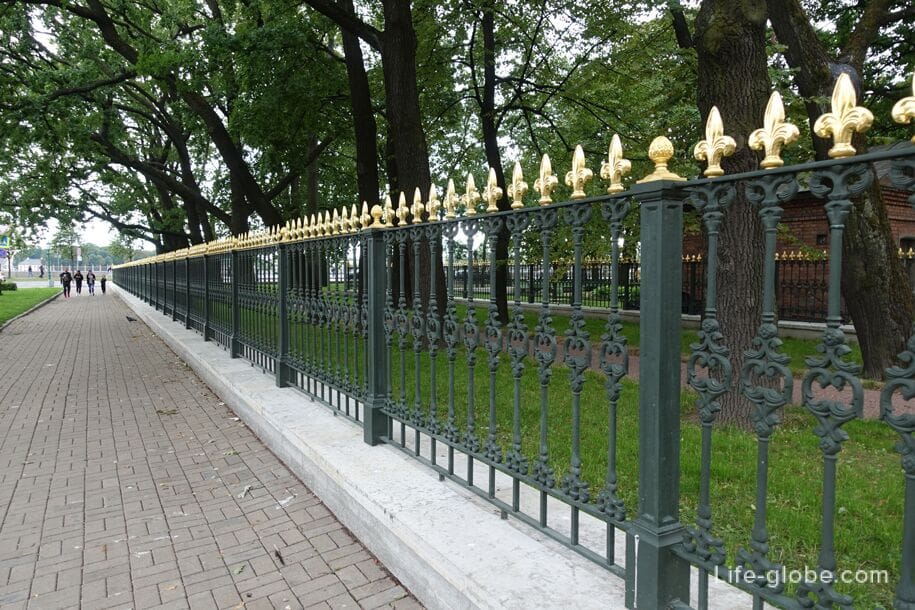
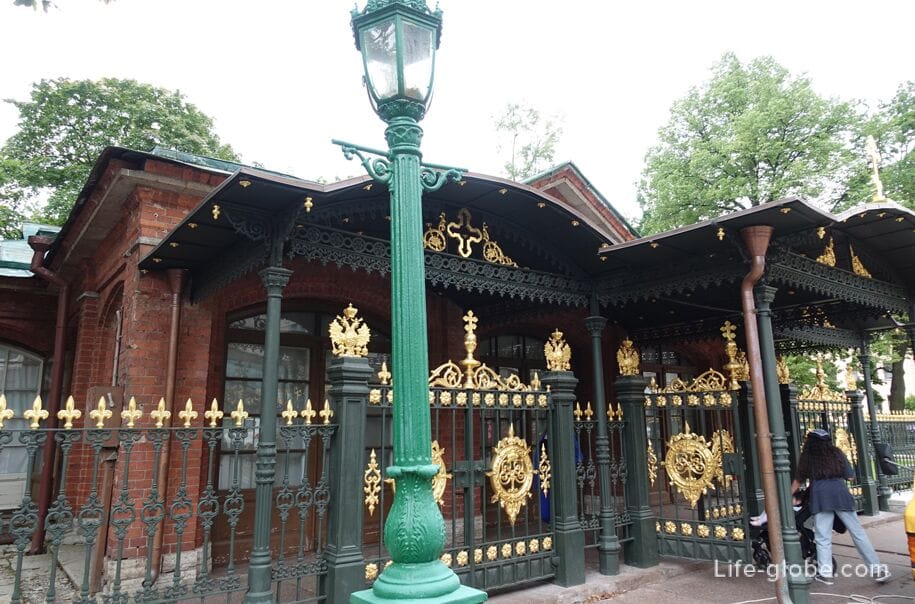
In 1875, a bronze bust of Peter I, cast according to the model of the sculptor P.P. Zabello and surrounded by a cast-iron lattice, was installed on a high pedestal between the first and second fences of the House of Peter I.
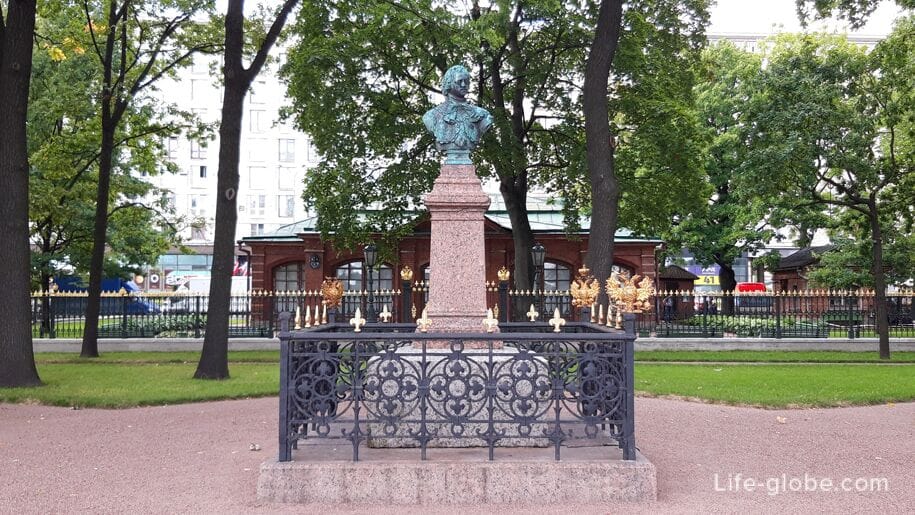
During the Second World War, Peter's House was damaged by bombs and shells. After that, extensive restoration work was carried out in the first St. Petersburg Palace.
The House of Peter I became the first museum open to the public after the lifting of the siege of Leningrad.
The museum in the house of Peter the Great
Today the House of Peter the Great is a museum and you can visit it. It is more accurate to visit not the wooden House itself, but to go into the case (building) surrounding the House, and already through the open windows of Peter's wooden House to see the interiors of rooms where the furnishings with original items of Peter's time, including memorabilia of Peter the Great himself, are recreated.
A painting imitating brickwork is partially visible on the exterior facade of the house.
The walls of the interior of the House, as in Peter's time, are upholstered with sea canvas. The windows are glazed with "moon" glass, made in our time according to the technology of the early 18th century. Also preserved is the painting on the door leaf from the dining room to the bedroom, which depicts the interior of a Western European cathedral. The ornament in the form of herbs and flowers, made with oil paints, can be seen on the platbands of windows and doors.
Above the door of the House on the left is attached a bronze plate indicating the height of Peter the Great - 2 meters 4 centimeters.
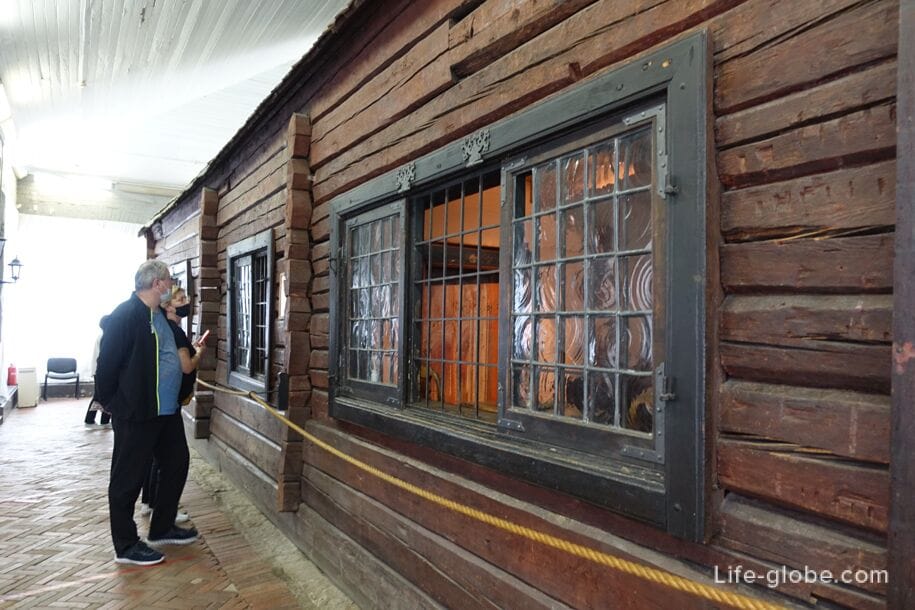

A mark on the House about the height of the flood on September 19, 1975.
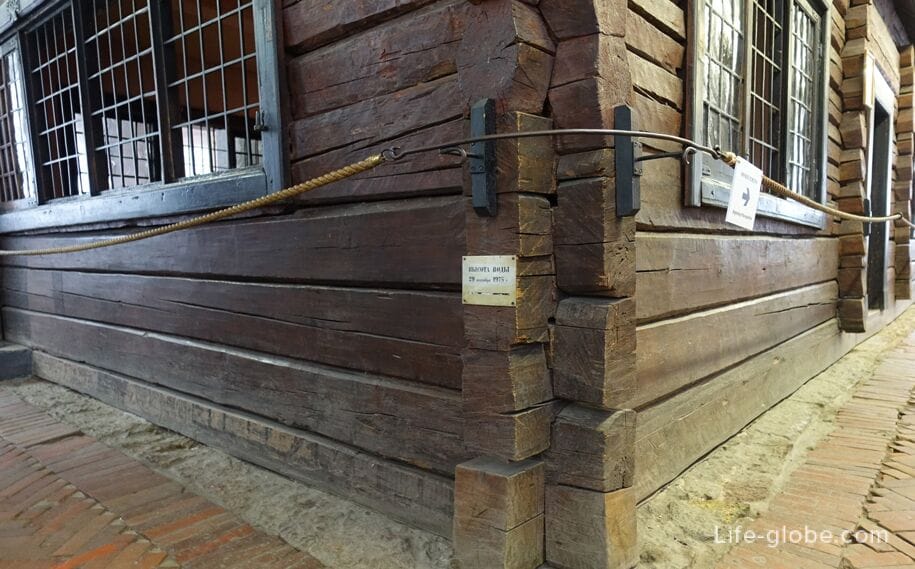
Rooms inside the House of Peter the Great
The study of Peter the Great is the largest room in the House with an area of 23.5 square meters.
From the 1740s to 1929, the study was used as a chapel sacristy.
On the table you can see a smoking pipe that belonged to Peter. The chair near the table was made by the tsar himself.

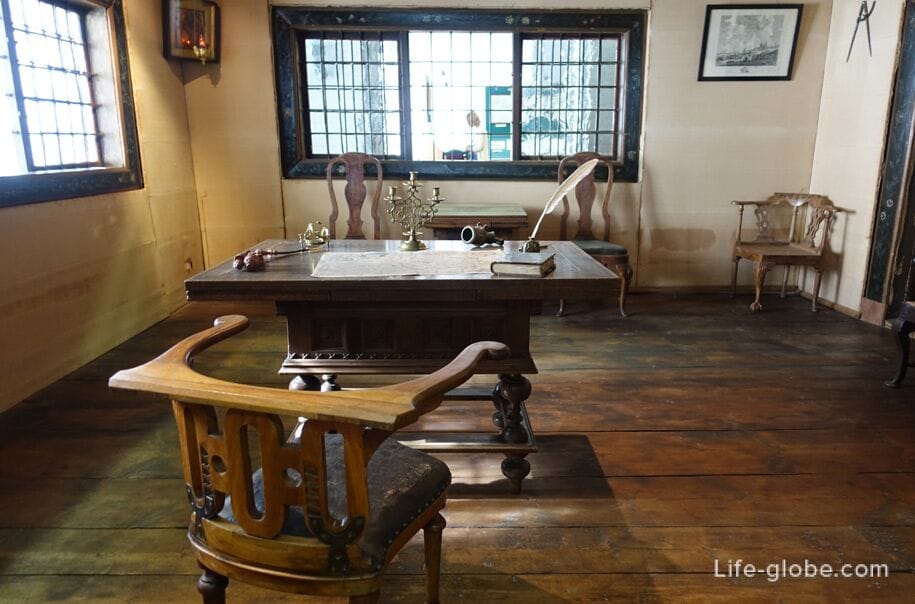
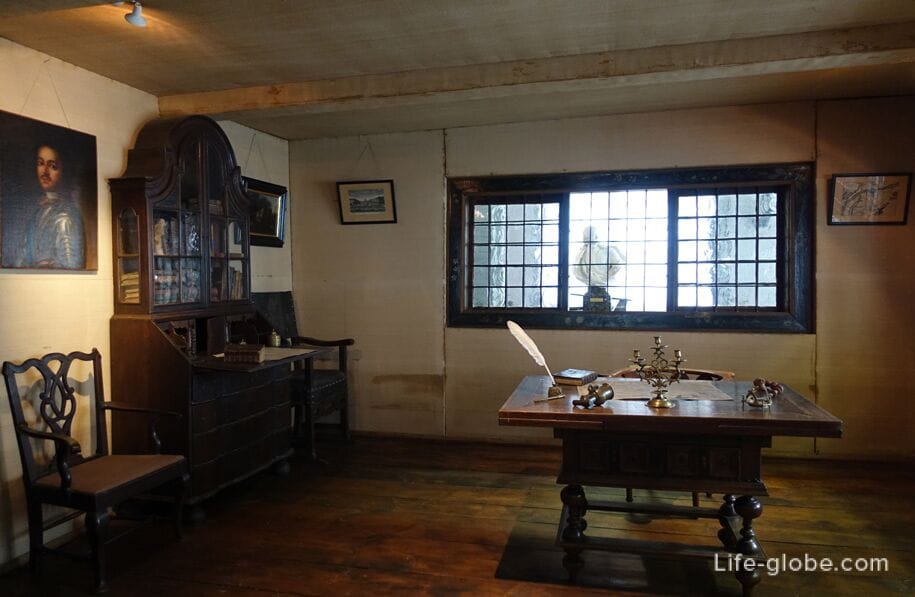
The bedroom is 6.72 square meters.
Next to the washbasin there is one of the canes of skillful oriental work, covered with the skin of a sea stingray and decorated with gilded ornaments, which belonged to Peter I, as well as a casting from his hand, made in 1707 when the tsar visited the iron foundries in Lipetsk.
Peter's bed was a camp-folding.
During the existence of the Chapel in the House, the window of this room was combed to the size of the doors.
The door from the bedroom leads to the dining room.
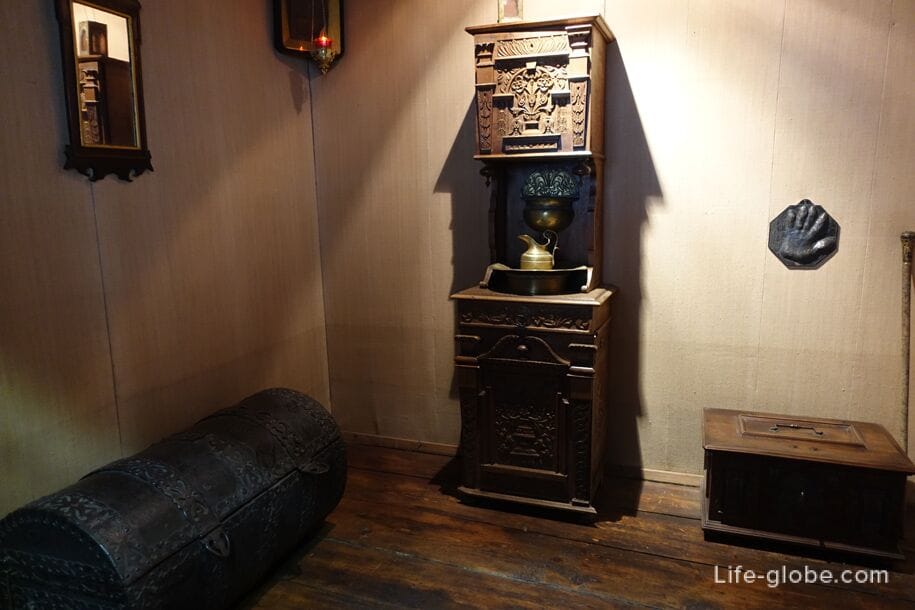

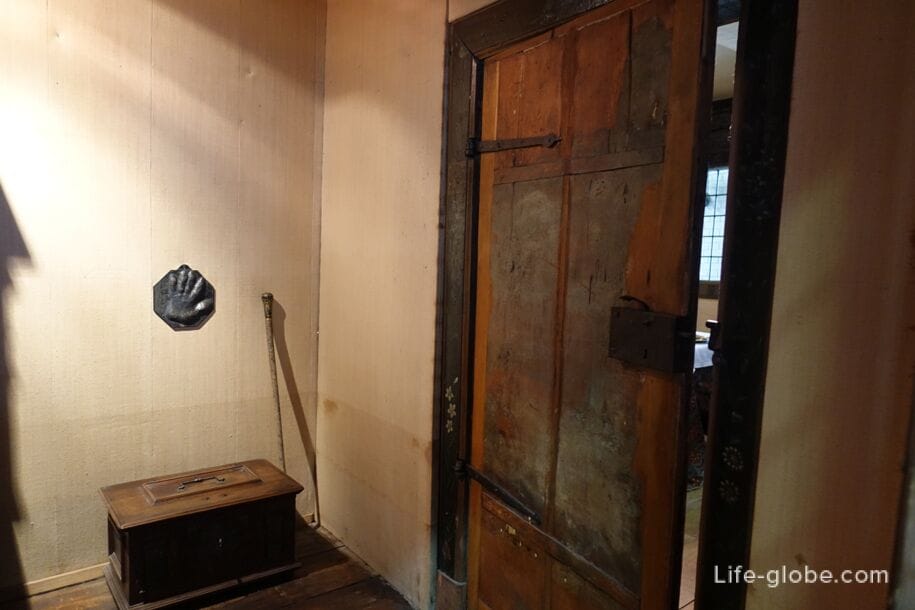
The dining room of Peter the Great with an area of 17 square meters, in which the atmosphere of the 18th century is recreated.
On the table are metal dishes made in Russian workshops, and samples of glasses from the first glass factory in Russia.
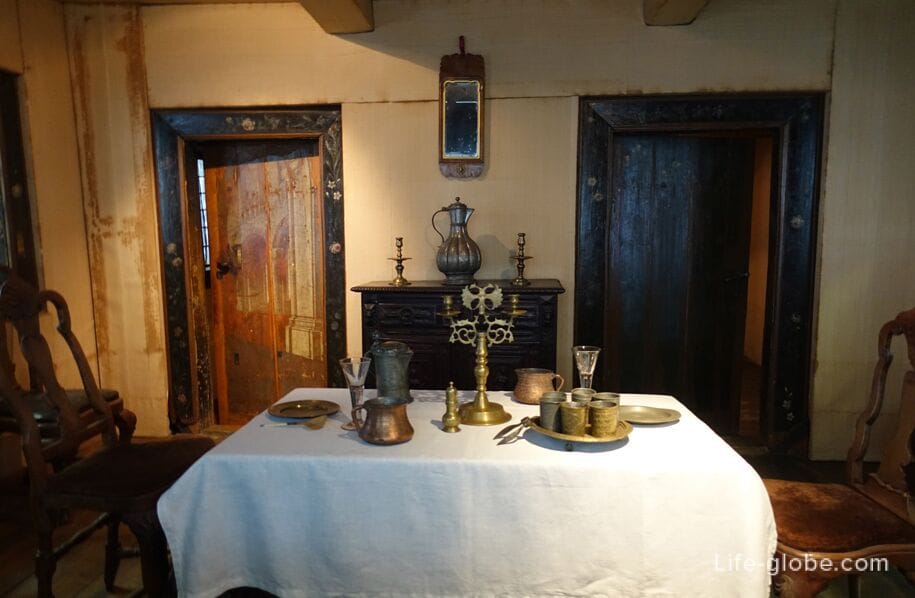
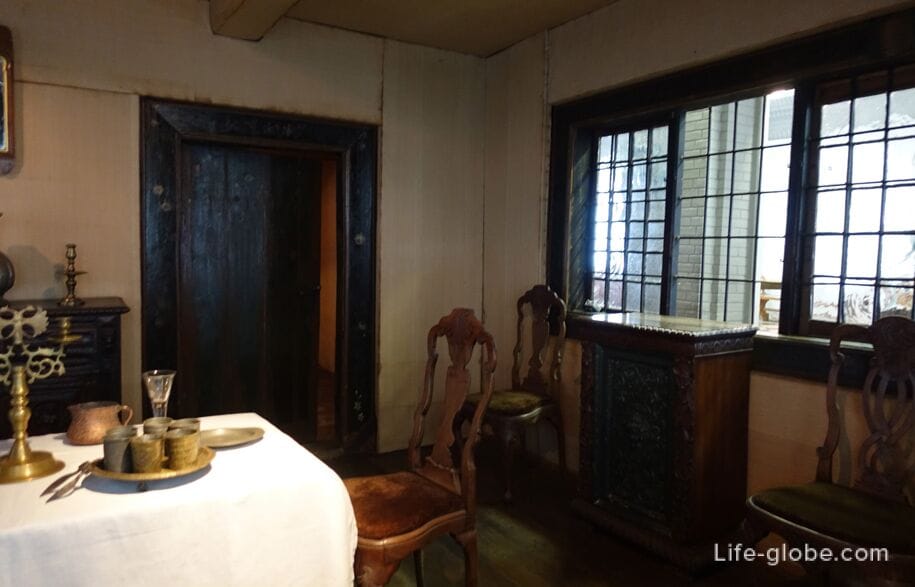

In the case of the House there are two exhibition rooms (vestibule pockets), in which the exposition is also located.
In the northern vestibule there is information about the House of Peter I and there is a mock-up of the Trinity Square with the House of Peter the Great in May 1706 (the work of the artist A.K. Dorogin).

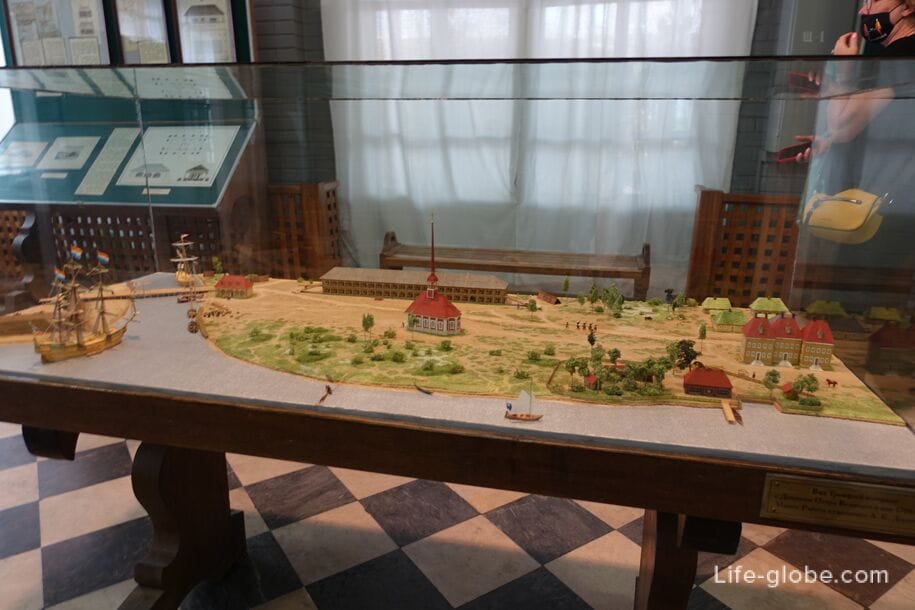
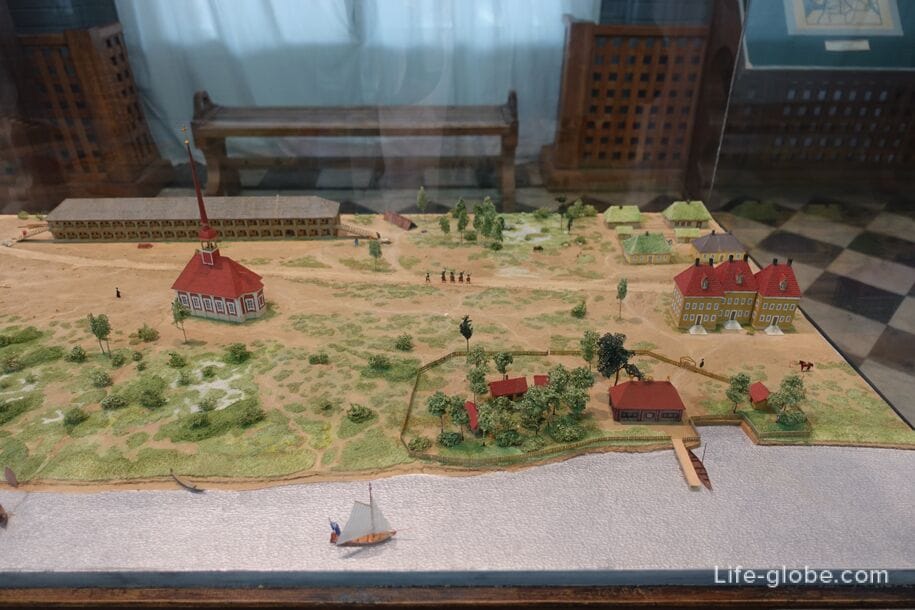
In the southern pocket are: a bust of Peter I and a four-oared vereyka boat from 1718, built with the participation of Peter I (wood, metal). The length of the boat is 7.70 meters, the width is 1.55 meters.
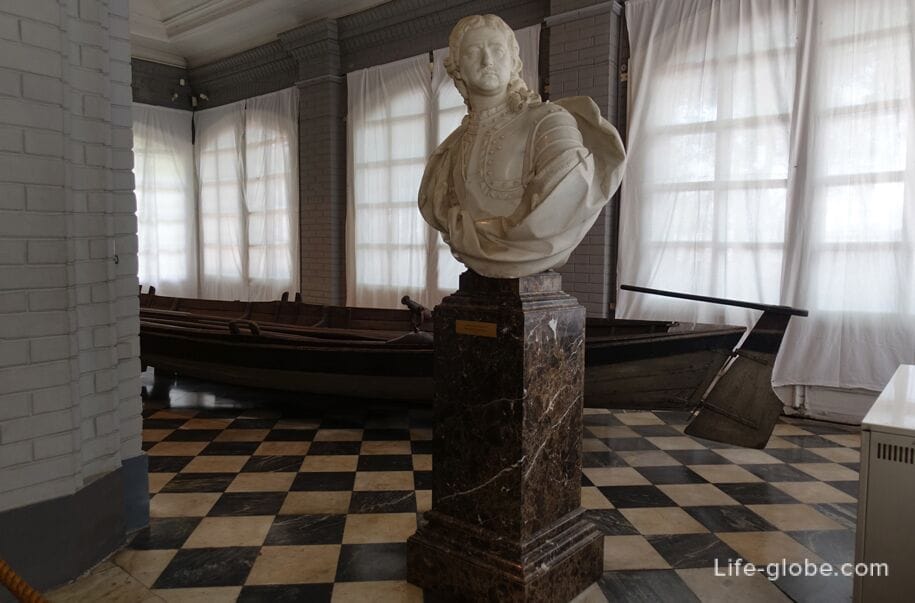
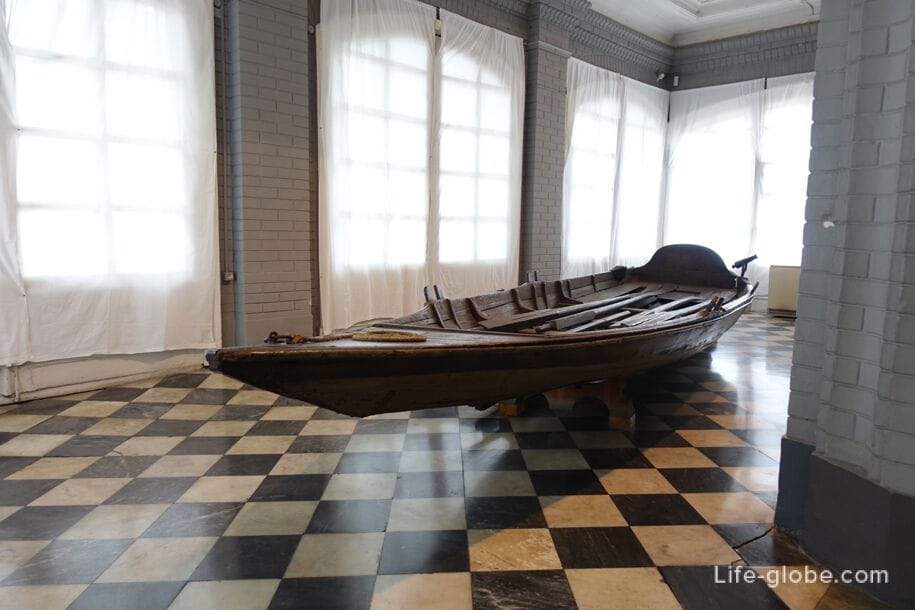
Practical information
The house of Peter the Great is located in the center of St. Petersburg, at the address: Petrovskaya Embankment, 6 (Petrogradskaya side).
Coordinates of the House of Peter I: 59°57'12.0"N 30°19'51.0"E (59.953333, 30.330833).
The nearest metro station is Gorkovskaya.
Entrance to the Peter the Great House Museum is paid. Tickets can be purchased at the ticket office near the Lodge.
The House of Peter I Museum is part of The Russian Museum.
The cost of tickets, opening hours and conditions of visiting the House of Peter I can be specified on the official website of the Russian Museum: rusmuseum.
All accommodation facilities in St. Petersburg, including in the city center and more remotely from it, can be viewed and booked here




